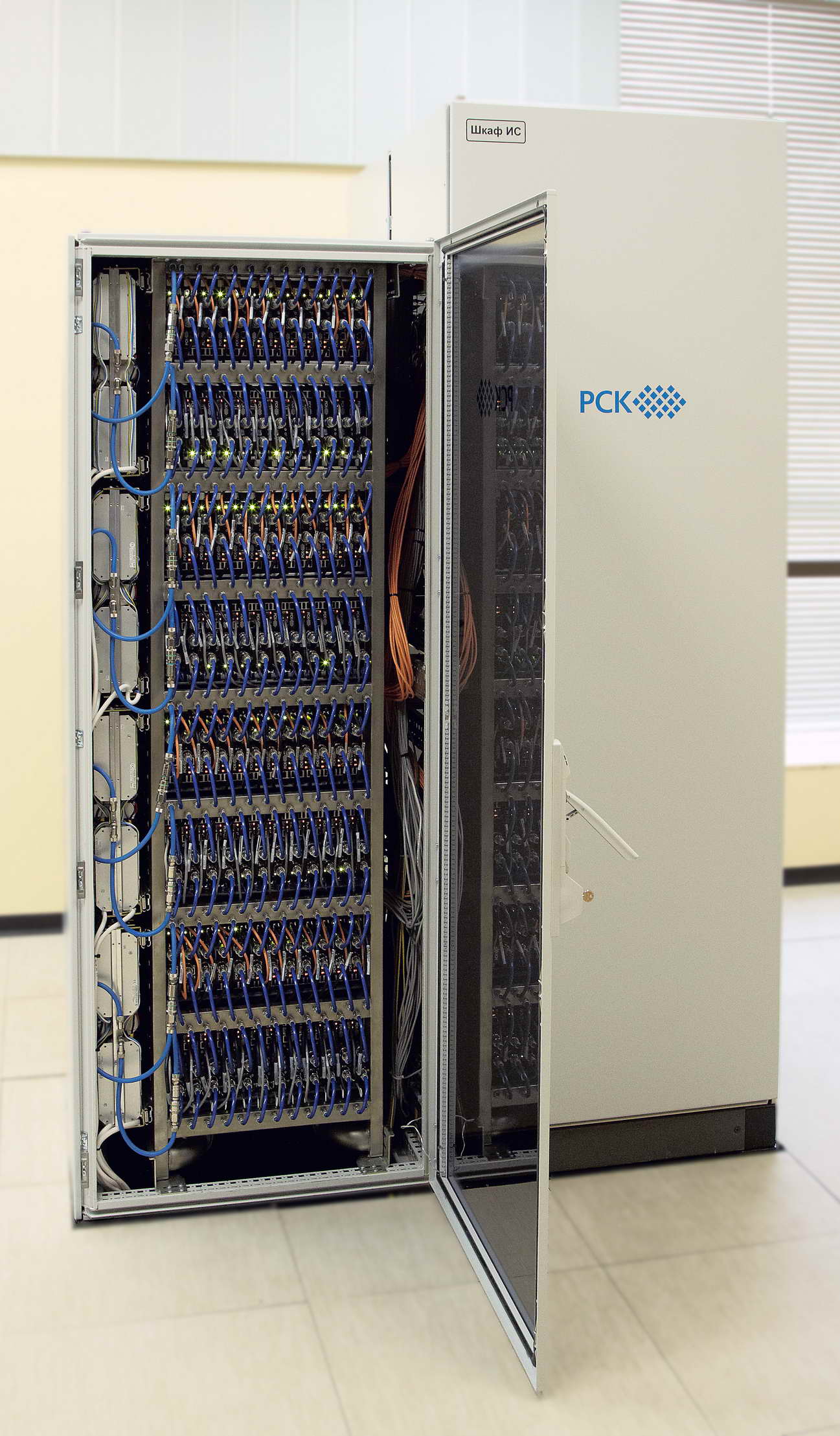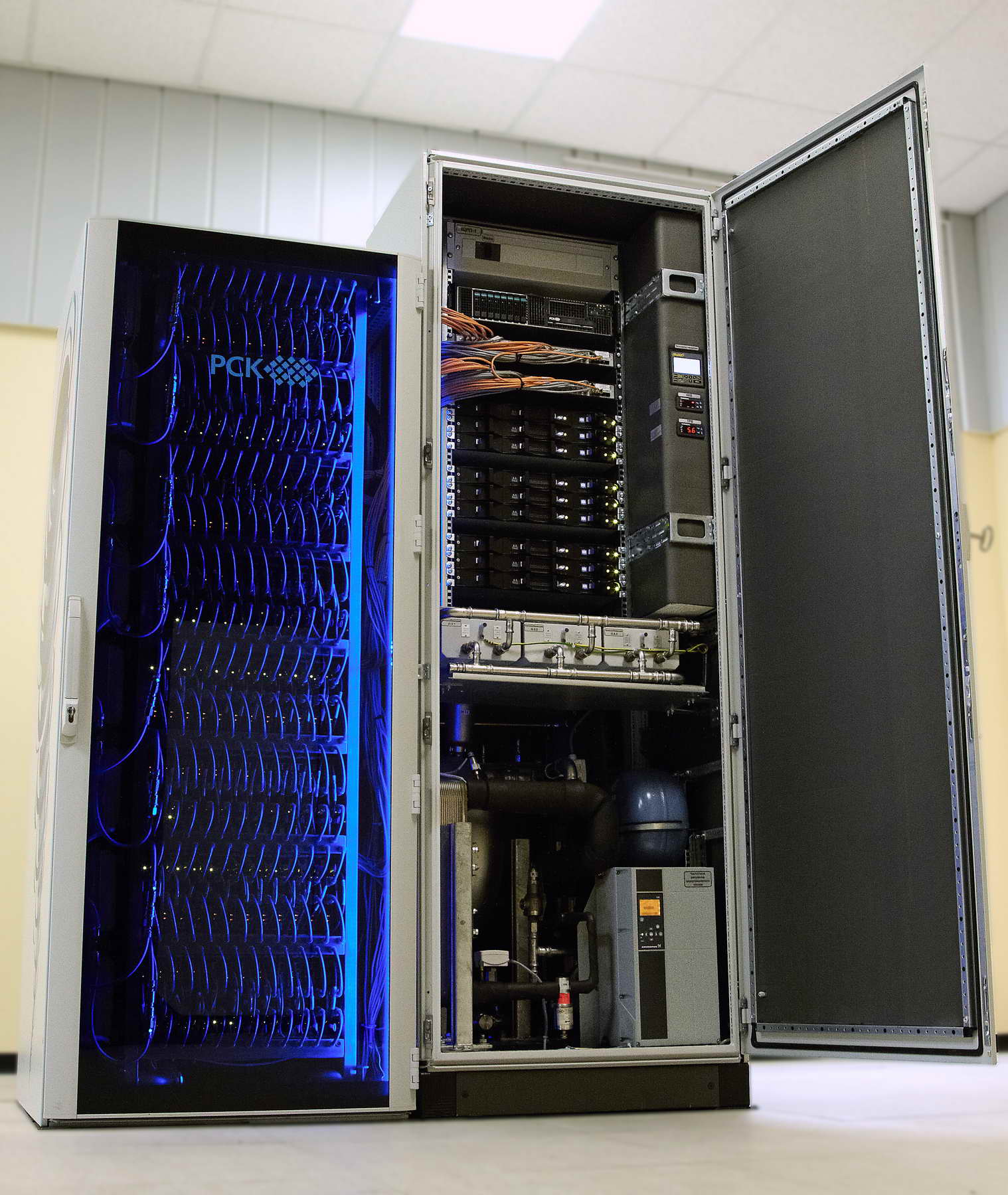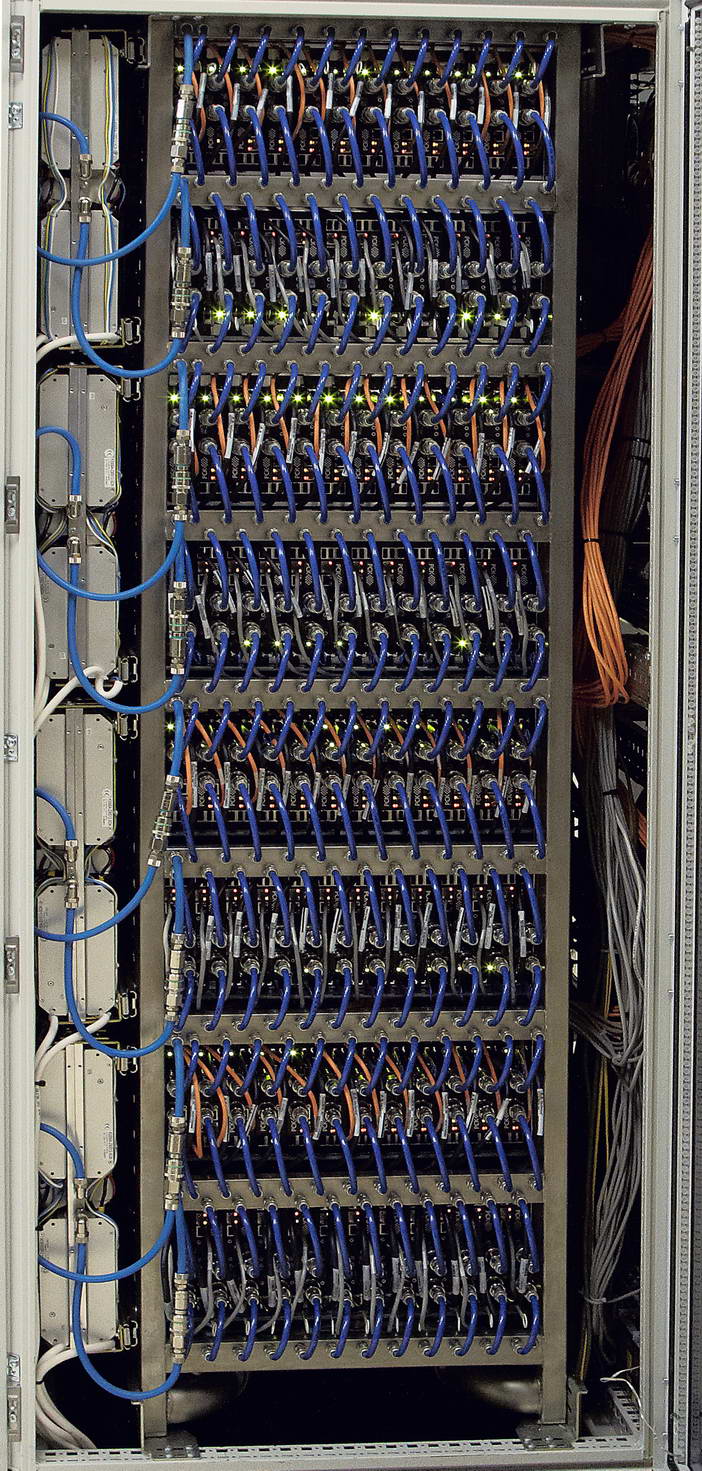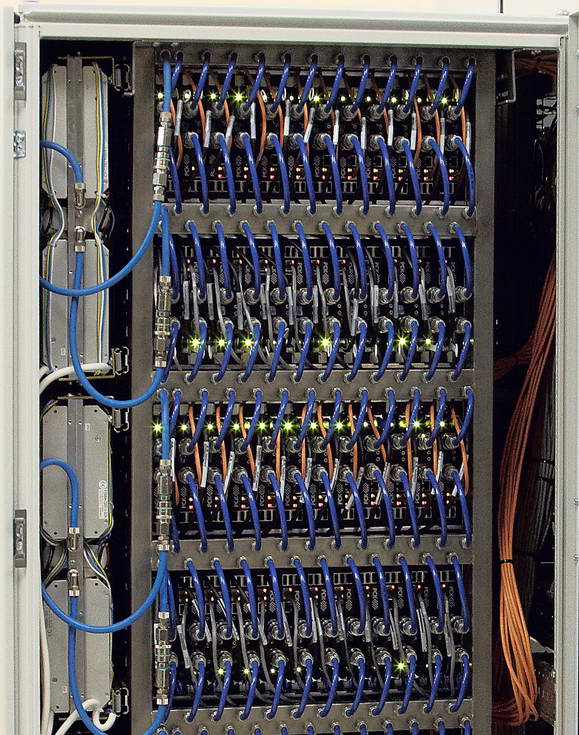Moscow, April 18, 2012. — The Federal Service for Hydrometeorology and Environmental Monitoring (Roshydromet), RSC Group and Intel Corporation announced the completion of a planned upgrade and go-live of a new energy efficient high-performance cluster created based on RSC Tornado innovative architecture, advanced direct liquid cooling, Intel® Xeon® E5-2600 processors and Intel® S2600JF server boards. The upgraded cluster has a peak performance of 35 TFLOPS (trillion operations per second). This is Russia’s and CIS first HPC project implemented with the use of new Intel Xeon E5-2600 server processors officially introduced at an event in Moscow just a month ago.
RSC Group acted a technology solution developer and an integrator of Roshydromet’s pilot cluster system with a peak performance of 15.33 TFLOPS introduced in October, 2011. The system was created on the basis of RSC Tornado architecture with the use of direct liquid cooling and previous generation Intel® Xeon® 5600 processors. This year, as a part of planned upgrade, Roshydromet’ cluster performance more than doubled and reached 35 TFLOPS by replacing the previous-generation processors with the highest-performing Intel® Xeon® E5-2690 processors (2.9 GHz, 135 W). The upgrade was completed without changing the size of the computing system. In turn, with the go-live of the upgraded high-performance system the computing power of Roshydromet’ s Main Computing Center (Roshydromet MCC) more than doubled (from 27 to current 62 TFLOPS). Roshydromet’s cluster is a part of a new class of solutions in RSC Group's line-up called RSC DCmini.
“As forecasting technologies and physical model filling today requires computing resources of about 300 to 500 TFLOPS, Roshydromet already started the development of a next upgrade stage. As a part of this preparatory project we’ve completed a planned upgrade of our existing computing cluster based on RSC Tornado with new Intel Xeon E5-2690 server processors. At a pilot operation stage, the new Roshydromet cluster became a tool for Russian meteorologists to further develop operational technologies in order to improve accuracy, shorten the lead time and increase refinement of weather forecasts. If we compare the performance, after we replaced the previous-generation Intel® Xeon® 5680 processors with the new Intel Xeon E5-2690 in Roshydromet’s cluster, the calculation time for a number of models decreased by 30 percent”, said Vladimir Antsypovich, Director of Roshydromet MCC.
Today, Roshydromet solves a wide range of complex tasks in hydrometeorological data processing, simulation and forecasting of processes in the atmosphere and ocean that require a lot of processing resources and their highly efficient utilization. The World Meteorological center in Moscow functioning on the basis of Russian Meteorological Office, Roshydromet MCC and Roshydromet Aviamettelecom together with centers in Washington and Melbourne is one of three World meteorological centers of the World Meteorological Organization (WMO). By working with WMO the World meteorological center in Moscow ensures fulfillment of Russia's international obligations for forecasting information and hydrometeorological survey data exchange.
The upgraded computing cluster performs calculation and modeling to solve a number of urgent tasks faced by the Hydrometcenter of Russia, Roshydromet’s leading operational and scientific center in the area of monitoring of current situation and the development of atmospheric processes. For example, it allows improving the accuracy of forecasting and modeling of weather conditions in the Sochi area at a test competition held in advance of the 2014 Winter Olympic Games, by decreasing the calculation span from several kilometers to 800 meters.
“Innovative RSC Tornado architecture and our new RSC DCmini solution with advanced direct liquid cooling allowed us to create Roshydromet’s computing cluster, which meets all stringent requirements for this type of system, and has truly unique characteristics: low power consumption in combination with record-breaking energy efficiency and huge computing efficiency. The project is of a strategic importance to us both because of technology innovations and further development prospects, as well as due to high social value of tasks being resolved by Roshydromet with the help of the new high-performance system", said Alexey Shmelev, COO at RSC Group.
“Due to long-standing cooperation between specialists of Intel and Roshydromet we optimized predictive models used by Roshydromet for cluster systems based on х86 architecture. This allowed customizing the computing system for current operational tasks within the shortest time. And the performance-leading Intel Xeon E5-2600 processors ensure that Roshydromet obtains additional computing performance to solve these tasks”, said Nikolay Mester, Enterprise business development manager in Russia/CIS, Intel Corporation.
RSC Tornado Architecture
The development of innovative RSC Tornado architecture for energy efficient data centers and super-computing complexes allowed RSC Group’s specialists to implement world's first advanced liquid cooling for widely available Intel® Xeon®-based standard server boards (by various manufacturers) initially designed for traditional systems with air cooling of electronic components. This is the second generation of RSC’s energy-efficient solutions for High Performance Computing, cloud environments and data centers.
Among unique features of RSC Tornado and solutions based on the architecture there are the following:
• 128 servers in a standard 42U 80х80 cm rack;
• Record-breaking energy efficiency. The system has an industry-record Power Usage Effectiveness (PUE) of less than 1.06 (this is the ratio of total power consumption vs. power consumption of electronic components). This means that maximum 5.7% of the consumed energy will be used for cooling of the system;
• Record-breaking computing effectiveness ratio — 92 % for previous generation Intel® Xeon® 5680 and the new Intel Xeon E5-2690 processors in LINPACK benchmark (Intel® Turbo Boost mode is always on, which provides for clock speed gain of up to 400 MHz);
• 65 kW of electric power per rack;
• Possibility to use Intel's best-performing server processors with heat dissipation of 135 W;
• High peak performance up to 47.5 TFLOPS per rack based on Intel x86 architecture with AVX Instruction Set;
• High density - 74 TFLOPS per square meter.
• High scalability — up to PFLOPS level (dozens of racks);
• Cost effectiveness – operating cost reduction by 60 percent (energy cost saving (in rubles) due to RSC solution operation);
• Compact size – multifold datacenter floor area reduction;
• Accelerator and coprocessor support.
RSC Group’s new line-up includes the following solutions based on RSC Tornado architecture: RSC DCmicro (16 to 64 nodes), RSC DCmini (64 to 256 nodes) and RSC Data Center (more than 2 racks up to dozens of PFLOPS).
Additionally, RSC specialists implemented a fully integrated software stack for High Performance Computing (НРС).







